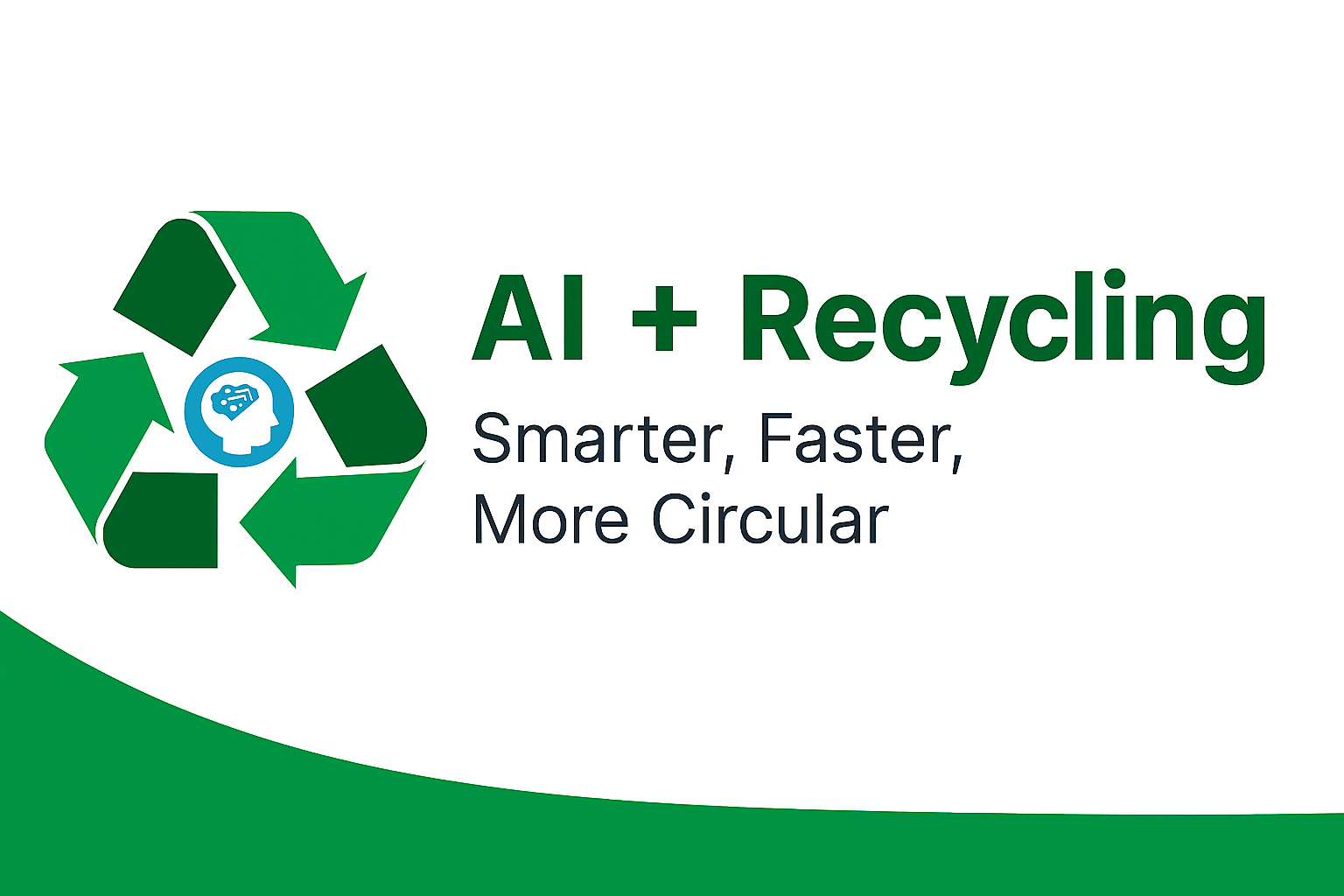♻️🤖 AI + Recycling: Smarter, Faster, Circular
What if the next big breakthrough in fighting climate change doesn’t come from solar panels or electric cars — but from AI-powered recycling robots?
Artificial Intelligence is no longer just powering chatbots or self-driving cars — it’s quietly transforming how we deal with one of humanity’s biggest challenges: waste. From robots that disassemble electronics to machine learning models that identify plastics invisible to the human eye, AI is becoming the “sorting brain” of the circular economy. The following table highlights the most exciting real-world projects where AI and recycling converge to reshape sustainability.
| 🌍 Initiative / Project | 🤖 AI Role | ♻️ Recycling Target | 🚀 Impact |
|---|---|---|---|
|
PlasticNet + Solvent Recycling
Univ. at Buffalo & Wisconsin |
Machine learning models classify plastics with near‑perfect accuracy | Multilayer & hard-to-sort plastics | Enables solvent-based recovery of valuable polymers, reducing landfill waste |
| Amazon AWS + Molg Robots | AI-powered robots visually inspect & disassemble electronics | Data center servers & e-waste | Extends device lifespan, recovers components, reduces toxic e-waste |
|
Amcor UK Facility
(Tomra + Greyparrot) |
AI vision systems for selective separation | Household polypropylene (PP) | Boosts recycling rates, supports UK circular economy goals |
| Tetra Pak + Recycleye QuantiSort | AI optical sorting identifies beverage cartons in mixed waste | Food & beverage packaging | Improves carton recovery, reduces contamination in recycling streams |
| Portland, OR Recycling Plant | Conveyor + AI-assisted vision ejects non-recyclables | Mixed municipal waste | Handles waste from ~200,000 households, lowers contamination |
|
AI Waste Management Systems
(Global) |
Predictive analytics optimize routes & facility loads | City-wide recycling streams | Cuts costs, reduces emissions, increases recycling efficiency |
🚀 The Road Ahead
These initiatives show that AI is not just a tool for efficiency — it’s a catalyst for rethinking recycling itself. By combining vision systems, predictive analytics, and robotics, we’re moving toward a future where waste streams are cleaner, recycling rates are higher, and valuable resources are recovered instead of lost. Looking ahead, expect to see:
- ⚡ Hyper-local AI recycling hubs that process waste at the neighborhood level.
- 🧠 Self-learning robots that adapt to new packaging and materials in real time.
- 🌍 Global AI-driven waste maps that track materials across supply chains to close the loop on circular economies.
In short, the future of recycling will be smarter, faster, and more circular — with AI at its core.

Software engineer, passionate about data and information, immersed in a total transformation with artificial intelligence.
